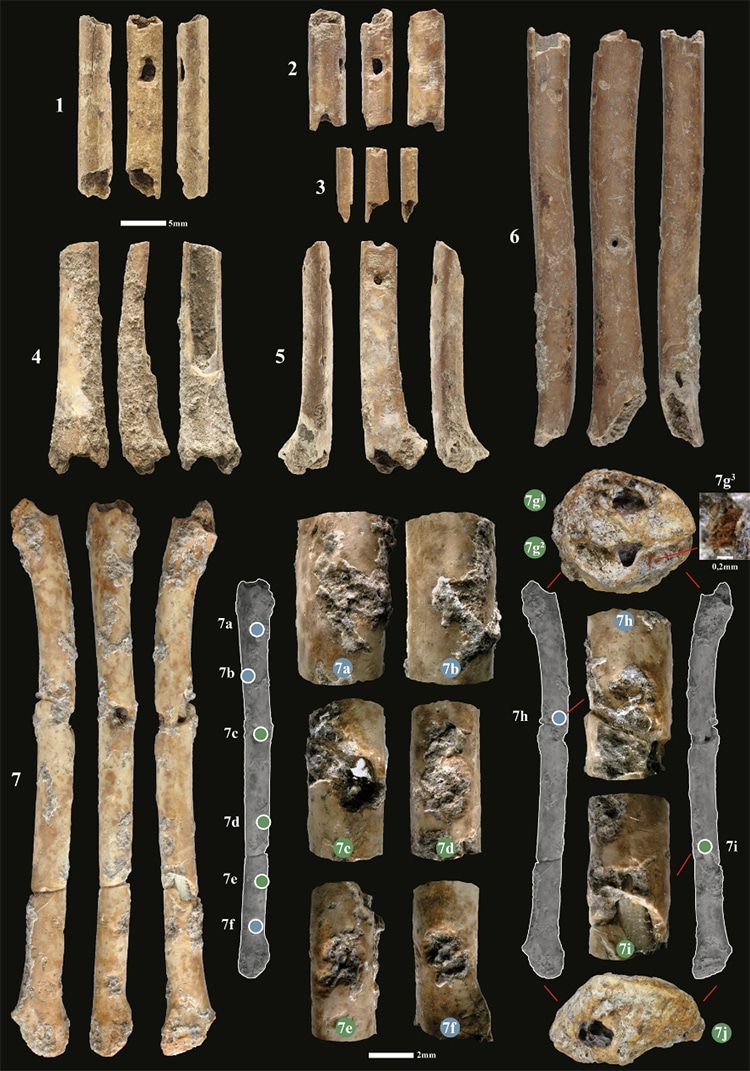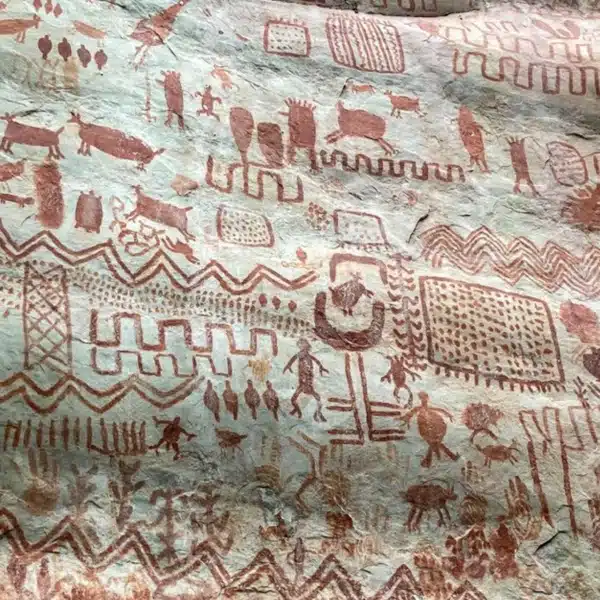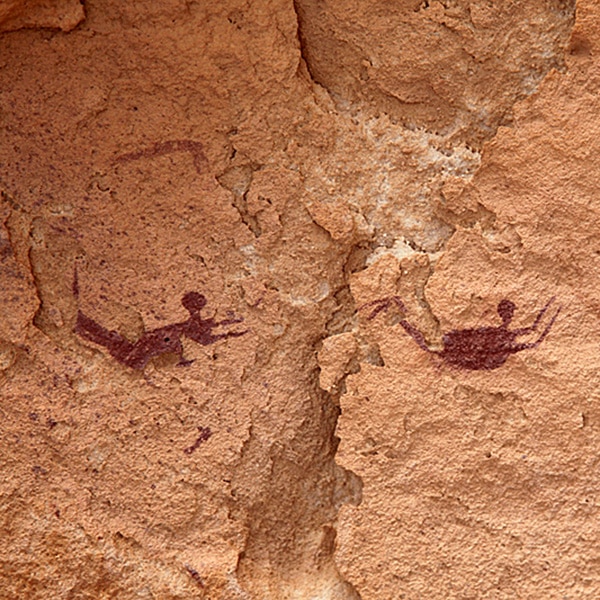
The 12,000-year-old bird bone flutes recently discovered. (Photo: Davin et al., 2023)
Researchers in Israel found a deposit of ancient bird bones clearly collected by people from 12,000 years ago. The 1,100 bones were discovered in the Hula Valley in Israel, forming a fascinating collection. Yet within these relics lay several carefully carved little surprises. Seven of these bird bones were crafted into flutes by the Natufians, a people who lived in the Levant region from 13,000 and 9,700 BCE. As described in Scientific Reports, researchers were able to identify and even replicate the bone flutes, which may have once been used to lure the birds of prey by mimicking their sounds.
The bone-crafted flutes bear the telltale mouth and finger holes of wind instruments like flutes. Interestingly, the ancient sculptors chose small bones from Eurasian teal and Eurasian coot birds. This size allowed the flutes to replicate the tones of the kestrel and the sparrowhawk, birds of prey that once lived in the region. Technically and expertly made, it is believed that the flutes were painted and worn around the neck. Additionally, they may have been hunting aids—luring the birds which the Natufians were known to eat. However, it is also possible that the flutes were purely ceremonial, but wear and tear on the artifacts indicates that they were once played. Regardless, the 12,000-year-old flutes are some of the oldest bird-mimicking instruments ever discovered.
The flutes are a particularly pivotal find for the Near East and an especially exciting opportunity for researchers. Replicas were created to hear the flute sounds. “It was very moving when I played it for the first time and heard the sound that Natufians made 12,000 years ago,” lead author Laurent Davin, of the French Research Center in Jerusalem, told Live Science.
The flutes were crafted as the Natufians were transitioning their civilization from nomadic to settled and agricultural. Yet the instruments indicate hunting remained an important and clever task of the era. “The Natufians chose those small bones because they wanted the sound to be like this in order to imitate falcon sounds,” said Davin. “This demonstrates their knowledge of acoustics and indicates that there were probably other instruments made of perishable materials.”
Meanwhile, fellow author Hamudi Khalaily, of the Israel Antiquities Authority, told The Times of Israel about his plans to return to Hula Valley when the birds of prey migrate. “I’m naturally an optimistic person, but I do really think it will work,” he said. “If we were able to replicate this sound, I’m certain it will bring those birds to us.” Rivka Rabinovich, of the National Natural History Collections at the Hebrew University, also had an important takeaway: “The message from this is that you really need to save everything [excavated from a site] because you always see these things with new eyes, and new tools. It takes a long time to sift through things, and when you look at it anew, you can see it differently.”
If you'd like to hear the sound for yourself, scroll down.
Among over a thousand bird bones discovered at an ancient Israeli site, seven turned out to be bird bone flutes crafted to mimic the tones of birds of prey.

Laurent Davin plays a replica bird bone flute. (Photo: Davin et al., 2023)
The flutes may have been used to hunt by their creators, who lived in the region 12,000 years ago.

Mapping late/final Natufian sites in the Levant. (Photo: Davin et al., 2023)
You can listen to the sounds that these bone flutes make in this video:
h/t: [Smithsonian Magazine]
Related Articles:
Perfectly Preserved 3,000-Year-Old Bronze Sword Discovered in Germany
Roman Mausoleum With Mosaics Excavated in London
Dutch Metal Detectorist Discovers a Medieval Hoard of Gold Jewelry and Silver Coins
Archeologists Find Preserved Food at an Ancient Iraqi Tavern Site






















































































